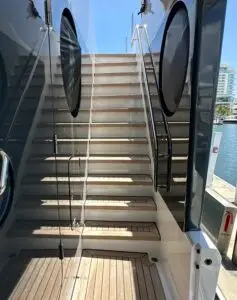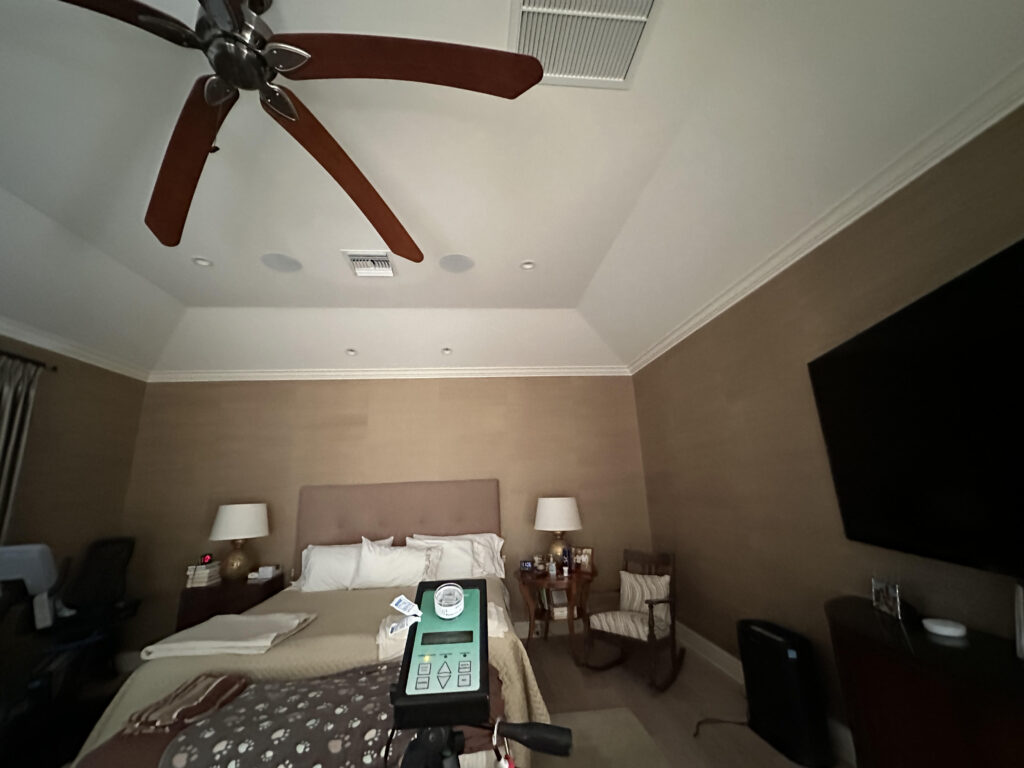If you’re noticing dust around the vents on your yacht, a musty odor when the AC runs, or uneven cooling in certain cabins, you’re not just dealing with comfort issues. You’re seeing symptoms of a system that needs attention.
Marine HVAC systems are exposed to salt air, high humidity, and confined spaces—conditions that create the perfect storm for dust, mold, and debris buildup inside your ductwork. Unlike a residential AC system, your yacht’s environment doesn’t just circulate air—it seals it in. And when that air is compromised, the comfort and health of everyone onboard can be affected.
This article is for yacht owners, captains, and operators who take maintenance seriously and want to understand what these warning signs mean, how often ducts should be cleaned, and what a proper service actually looks like.
Why Marine Ducts Get Dirty Faster
Your yacht’s HVAC system is constantly pulling air from the outside—and in a marine environment, that air carries more than just ocean breeze. It brings moisture, salt particles, fiberglass dust, pet dander, and organic debris into an enclosed loop. Over time, that material doesn’t just clog filters—it settles in the ductwork.
Air ducts run through confined, insulated spaces under decks, behind cabinetry, and through mechanical compartments. These tight areas often don’t dry out properly, which leads to microbial growth and odor-causing bacteria. Even in luxury yachts with top-tier finishes, dirty ducts remain out of sight—but not out of effect.
Signs You May Need Marine HVAC Duct Cleaning
Most yacht owners don’t think about duct cleaning until something feels off. You might first notice a stale or sour smell, a haze of dust near a vent, or guests complaining about dry eyes or sinus irritation. These subtle indicators often build up slowly, and because they’re invisible, they’re easy to ignore.
Some of the most common early indicators include:
-
Musty or mildew-like odors when the system turns on
-
Dust collecting near supply or return vents even after cleaning
-
Inconsistent airflow or cooling in different cabins
-
A noticeable increase in allergies or respiratory symptoms onboard
-
Visible black spotting or discoloration around vent edges
If any of these apply to your vessel, it may be time to schedule an inspection.

How Often Should Yacht HVAC Ducts Be Cleaned?
Unlike homes, where NADCA recommends duct cleaning every 5 to 10 years, yachts require a tighter maintenance cycle due to their operating environment.
For private yachts with light seasonal use, a full cleaning every 2 to 3 years is generally sufficient. However, if your yacht operates year-round, sits in tropical dockage, or is used for charters, you should expect to clean ducts every 12 to 18 months.
Yachts that have undergone recent refits, water damage, or have been stored with limited ventilation should also be assessed before returning to service.
What to Expect from a Professional Marine Duct Cleaning
A proper duct cleaning isn’t just about removing visible dust. It requires specialized equipment, experience in tight mechanical spaces, and respect for luxury interiors.
At GreenFox Air Quality, the cleaning process typically begins with a full system inspection, often using scoped cameras to assess buildup in hard-to-reach ducts. Once problem areas are identified, HEPA-filtered negative air machines are used to safely extract contaminants without releasing particles into the cabin.
Additional steps may include:
-
Cleaning coils, blower compartments, and air handler housings
-
Fogging antimicrobial solutions to neutralize mold and bacteria
-
Sealing or encapsulating deteriorating fiberglass duct interiors
-
Testing airflow and verifying proper system balance post-cleaning
The service is usually completed in one day, with minimal disruption to soft goods or vessel layout.
Why This Matters Beyond Cleanliness
Air quality aboard a yacht is often overlooked until it causes discomfort. But the truth is, poor IAQ can affect everything—from the perception of luxury to the health of your crew. Guests might describe a musty smell or feel “stuffy” below deck, even if the space looks spotless. In a charter setting, that impression could impact bookings and reviews.
For owners, maintaining air quality is a matter of long-term asset protection. Microbial growth inside ducts can damage insulation, degrade metal surfaces, and shorten the lifespan of your HVAC equipment. Dust buildup can also force your system to work harder, increasing energy use and wear.
What Else Can Help Maintain Air Quality Onboard?
Cleaning your ducts is an essential first step, but it shouldn’t be the last. Yacht systems benefit from additional strategies that prevent buildup and maintain consistent air quality:
-
Installing UV-C light inside air handlers to stop microbial growth
-
Upgrading to higher-efficiency air filters for finer particulate capture
-
Using onboard dehumidifiers to reduce moisture inside the duct system
-
Scheduling annual IAQ checks to monitor invisible contaminants
These upgrades support a cleaner HVAC system and keep your environment stable, especially in tropical or year-round conditions.
Final Thoughts: A Smart Move for Any Yacht Owner
Dust around a vent may seem minor. But like a warning light on a dashboard, it’s a symptom—not the cause. isn’t just about air—it’s about preserving the investment, experience, and health standards that define a quality vessel. When your HVAC system runs clean, everything else onboard feels better—more comfortable, more breathable, more refined.
If your system hasn’t been inspected in the last few years—or if you’re already seeing signs—it’s worth addressing now before it escalates. A single cleaning can restore comfort, eliminate uncertainty, and keep your vessel operating at the level it was built for.


